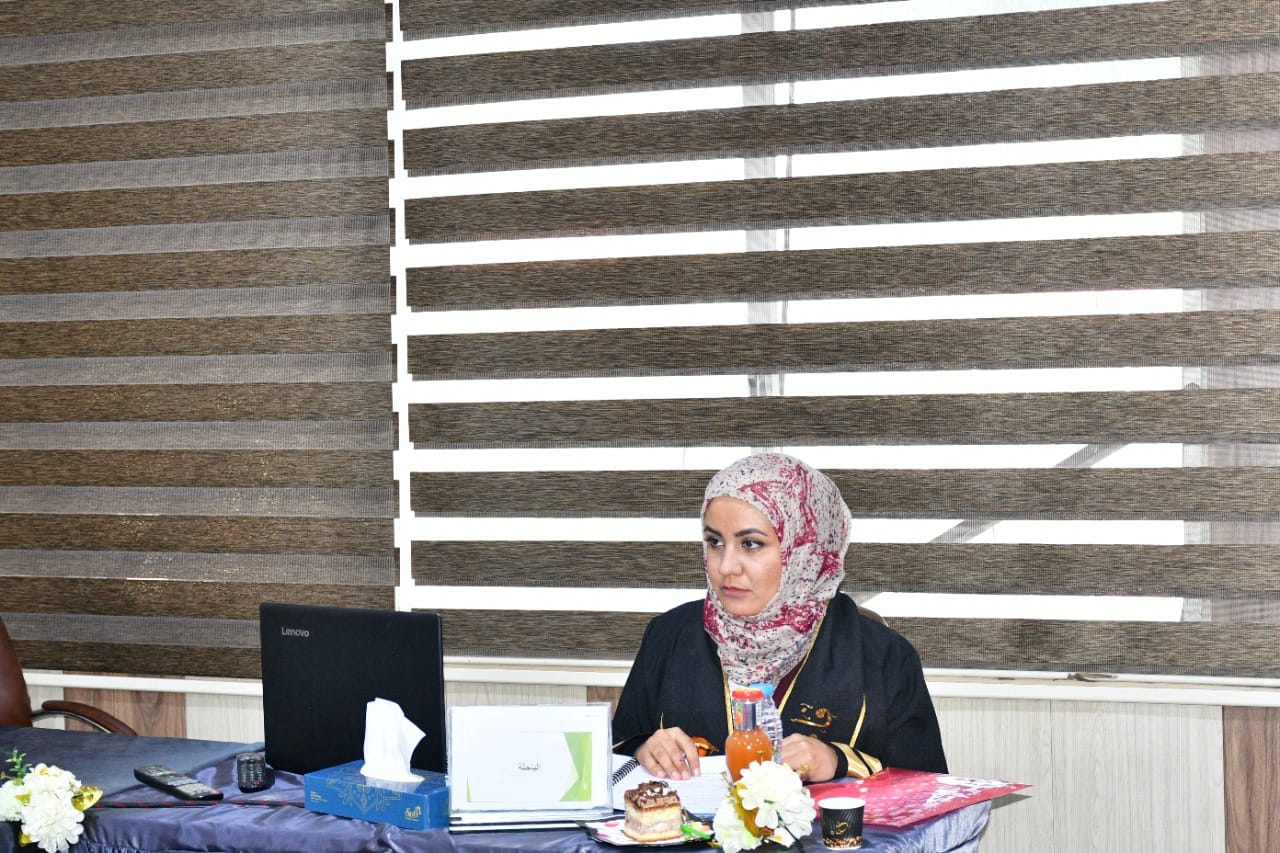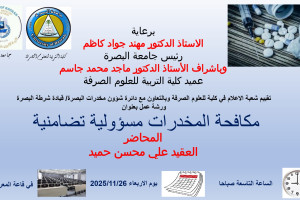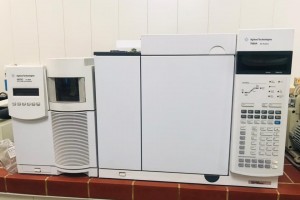
The College of Education for Pure Sciences, Department of Physics, University of Basra, discussed a master’s thesis on the preparation and characterization of the active layer consisting of (P3HT: PCBM) in organic photovoltaic cells.
The message presented by the researcher (Fatima Muhammad Yusuf) included
In this study, the active layer solution was prepared in organic solar cells by mixing poly(3-hexylthiophene) (P3HT) (20K) with (phenyl C60 butyric acid methyl ester) (PCBM) in different ratios of (PCBM) (1:0.5, 1). :0.8, 1:1, 1:1.2, 1:1.5, 1:2).
The mixture was dissolved in chloroform solvent. The solution was deposited on glass substrates using the Spin Coating method.
The first part of the study focused on exploring the surface morphology of thin films prepared for all ratios by analyzing light microscopy images using the Image J program. The surface study of thin films confirmed that the nature of the surface morphology is uniform with no apparent defect for the ratios (0.5-1%), While the presence of roughness was observed on the surface of the membrane in the ratios (1.2-2) of the acceptor, and this works to create a poor shape of the surface, which leads to the creation of defects and reduce the charge generation process in the optically active layer, and thus low performance of the device.
The optical properties of the active layer films such as absorbance (A) and reflectivity (R) were studied within the wavelength range (300-800 nm), also the optical constants were calculated as the damping coefficient (K) and refractive index and the complex dielectric function was calculated in its real (ε_r) and imaginary parts ( ε_i) within the wavelength range (300-800 nm) depending on the data of the dimmer and refractive index, the study showed that the absorbance spectra of the films of the materials under study fall within the visible light range and increase with the increase of the acceptor ratio in the active layer.
The internal absorption of the device was calculated by performing optical modeling by simulating the composition of the device (Glass/ITO/PEDOT: PSS/P3HT: PCBM/Al) used for all ratios, and using the TMM (transport matrix method) showing the internal absorption spectra Resulting in normal incident light are clear differences in the amount of absorption in the region (450-650nm) of the wavelength. Optical modeling was used to improve the performance of the device based on the change of the modulus ratio in the active layer and to predict the internal quantum efficiency of the device (IQE) based on the current density (J_SC) values of the device, as a result, the ideal (J_SC) values were obtained (11-14mA/〖cm〗 ^2) It was compared with the experimental values (J_SC) (3.8-8mA/〖cm〗^2) to determine the internal quantum efficiency, the results confirmed that the best mixing ratios used from (P3HT: PCBM) are (1:0.8, 1:1). It gives (IQE) in the range of (45-54%).
The optical modeling was re-conducted to test the effect of changing the angle of light incident on the device and the results showed that the current density (J_SC) increases gradually between 0-45°) and the reason is due to the increase in the number of photons absorbed in the active layer and thus the increase in the resulting current density, then it decreases for some The angle ratios (60°) of light fall due to the reflection that occurs at the interface (glass/air) at large angles.
The purpose of the message
Preparation of active layer thin films for organic photovoltaic (BHJ) devices.
Diagnose the surface of the active layer using an optical microscope.
Active layer (thin films) diagnosis (measuring ultraviolet and optical properties (n & k).
Use optical modeling to determine the optimum current density for the device.
Compare the results of visual modeling with the performance of the real device and find the best mixing ratios.
Study the effect of changing the angle of incidence of light on the solar cell.
Message inferred
From studying the effect of the acceptor ratio on device performance using optical modeling technique. The BHJ organic photovoltaic devices were simulated with an active layer composed of P3HT:PCBM with various percentages of PCBM (0.5-2%) while maintaining the thickness of the active layer (200±10 nm). The following conclusions can be noted:
The increase of the acceptor ratio and its effect on the surface morphology of the thin films was investigated by analyzing the optical microscopy images of the various donor/ acceptor ratios using the free source program Image J. In general, the solubility decreases with the increase of the acceptor ratio, which leads to an increase in the surface roughness at high ratios (i.e. at the ratios 1.5-2) which indicates that more defects will be generated in the membranes.
The films were optically diagnosed to determine the optical properties. From observing the absorbance spectrum of the films, we find that the absorption increases with the increase of the acceptor ratio in the active layer.
Optical modeling was performed to predict the internal absorption of the active layer as a function of the acceptor ratio. Optical simulation results with measurement data confirmed that the best scalability ratio is (1:0.8-1.2).
The modeled current density was compared with the measured current density for the same ratios to estimate the internal quantitative efficiency of the real device, and the best values (IQE) at the ratios (1:0.8-1) were in the range of (25-54%).
The effect of changing the angle of incidence of light on the calculated current density has been studied. It has been proven that organic solar cells can benefit positively from changing the angle of incident light (0^o-45^o) on them to increase the intensity of the short-circuit current.








